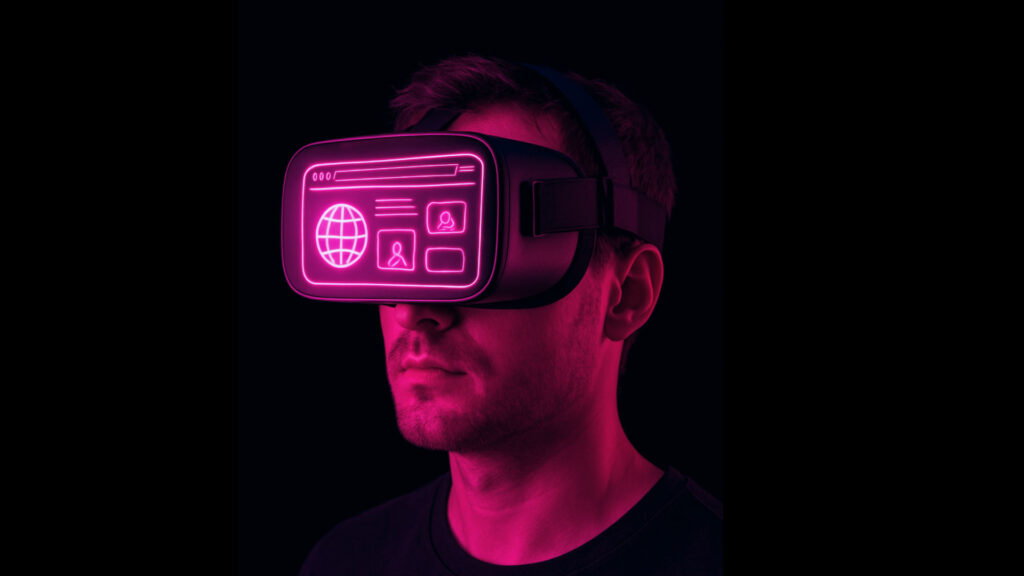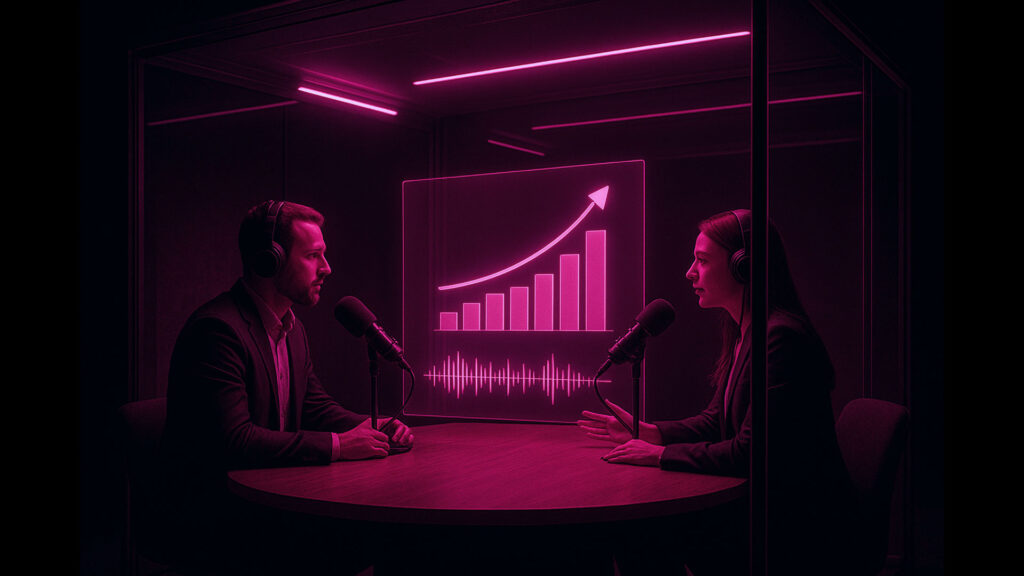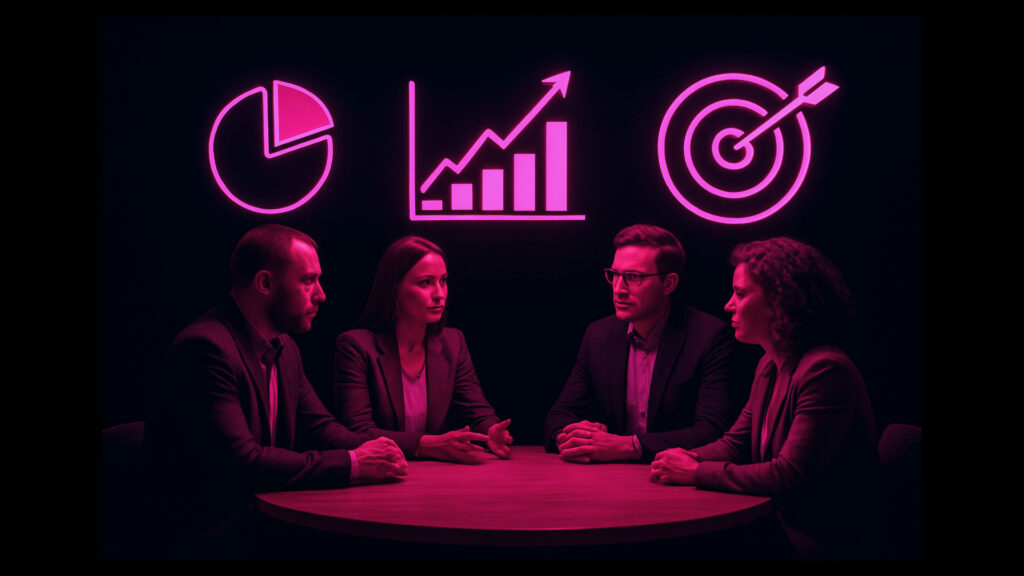Just ten years ago, most B2B companies relied on cold calls, trade show booths, and bulky PDF presentations. Today, these formats no longer work as they used to: clients have grown accustomed to digital services, instant responses, and personalized offers. Decisions involving multimillion-dollar purchases are made faster, with convenience and trust becoming top priorities.
The market is being shaped by several factors at once: the widespread adoption of artificial intelligence, the boom in video content, rising expectations for customer experience, and new data protection regulations. In this environment, marketing is no longer a supporting function — it becomes a driver of growth and competitiveness.
To stay in the game, companies must do more than observe the changes — they need to actively rethink their strategies. We’ve identified 12 trends that will shape the face of B2B marketing in 2026.
1. AI-driven marketing and personalization

Artificial intelligence is no longer seen as a “trendy tool for experiments” — it’s now embedded at the core of marketing. Algorithms help analyze massive datasets, predict customer behavior, and even manage media planning.
The key value of AI today lies in its ability to personalize experiences. It alerts sales managers when a client is ready for an upsell, automatically generates tailored proposals based on specific budgets, and optimizes the entire sales funnel.
In mechanical engineering, AI forecasts which parts are likely to fail within six months and offers service packages before breakdowns occur. In medtech, algorithms configure equipment setups for clinics of varying sizes. In the financial sector, AI analyzes customer transactions and recommends additional products at the right moment. For clients, this means saving time and reducing risk; for companies, it translates into higher conversion rates and more predictable revenue.
Example
Lenovo implemented the AI platform Lattice Engines to unify sales and marketing data, perform predictive lead scoring, and run personalized campaigns based on customer behavioral data. This enabled Lenovo to grow its marketing funnel by 1.5 times, accelerate the sales cycle by 20%, and significantly reduce lead qualification time — shifting these tasks from manual research to AI, which freed up marketing resources for strategic initiatives.
2. Video and short-form content
B2B solutions are inherently complex. Try explaining the operating principle of an industrial machine in five minutes — and you’ll quickly realize how hard it is to hold someone’s attention. That’s where video comes in.
Companies are increasingly using short-form videos that immediately answer the client’s core question: “What’s in it for me?” In just 60 seconds, they can showcase how equipment works, demonstrate a platform’s interface, or highlight the benefits of a service.
For example, logistics providers use video to show real-time cargo tracking, while agricultural equipment manufacturers demonstrate how a tractor performs three operations in a single pass. On educational platforms, videos help HR directors visualize how corporate training is structured. This format builds trust faster than a 30-page presentation and shortens the time to first contact.
Example
Caterpillar produces short (30–60 second) “How it works” videos for its equipment. One such video — “How a Cat excavator dismantles a building with surgical precision” — clearly illustrates the advantages of its precision positioning system.
Intuitive Surgical, the maker of the da Vinci robotic surgical system, used just 90 seconds to visually explain the complex “telepresence” technology behind its product. Instead of reading a technical description of the robotic arms, surgeons immediately see how the robot mimics human hand movements with extreme accuracy. This reduces the time needed to grasp the product’s value by 70–80% and significantly increases its appeal to medical equipment buyers.
3. Interactive content and immersive formats

Modern clients want to “try” a product before making a purchase. That’s why interactive calculators, online tests, and AR/VR demonstrations are no longer seen as novelties.
When an engineer can virtually disassemble an engine in an app, or an HR director can calculate the ROI of corporate training using a website tool, the buying decision becomes much easier.
Energy companies train employees using VR safety simulators that replicate real-life emergency scenarios. Universities use online calculators to help business clients estimate the payback period of employee education. In the IT industry, demo platforms allow customers to test functionality before signing a contract. This kind of experience transforms dry information into emotion and builds trust.
Example
GE (General Electric) developed an interactive “Digital Power Plant” is a 3D model of a power station that can be explored directly in a browser. Potential clients (energy companies) can “enter” the plant, click on components, and view real-time data and operational simulations. It’s a powerful tool for showcasing complex technologies.
4. Hyper-personalization
Personalization in B2B is no longer limited to addressing someone by name in an email. By 2026, landing pages, email campaigns, and even commercial proposals are dynamically tailored to the recipient’s industry, job title, and communication style.
For example, a banking landing page for small businesses emphasizes fast loans and minimal paperwork, while one for corporations focuses on complex financial structures. In manufacturing, engineers receive technical schematics, while procurement managers see cost-saving tables. In logistics, retail clients are shown FMCG case studies, while pharmaceutical companies see examples related to cold chain management.
This level of precision doesn’t just boost engagement — it makes communication feel respectful. The client senses that the company truly understands their needs.
Example
Cisco implemented hyper-personalization in its work with key corporate clients. They combined data from multiple sources: website activity, LinkedIn interactions, Cisco product usage, and competitor insights. Based on this data, automation generated personalized materials for each company and role. For instance, CFOs were shown ROI calculations, while IT administrators received technical performance metrics.
5. Thought leadership content
B2B clients are not just buying a product — they’re investing in expertise. Thought leadership content (analytical reviews, research, proprietary data) has become a key tool for building trust.
In 2026, first-hand data is especially valuable. Not recycled reports, but original market research or results from pilot projects.
An equipment manufacturer shares automation outcomes from a client’s factory. A logistics company publishes analytics on carbon footprint reduction after switching to electric trucks. A medtech firm presents clinical trial results for its devices. This kind of content is read by top executives and directly influences decision-making.
Example
McKinsey & Company sets the gold standard in this area. They regularly publish foundational research such as The State of AI or the Global Banking Annual Review. These reports don’t directly sell McKinsey’s services, but they become essential reading for executives worldwide, cementing the company’s authority and credibility.
6. The rise of digital customer experience
In B2B, expectations are increasingly mirroring those of B2C: user-friendly websites, chatbots, and transparent processes. If a client has to wait three days for a response or download an Excel file just to calculate pricing, they’ll likely turn to a competitor.
Digital experience is becoming a decisive factor in vendor selection. A metallurgy company’s online platform allows clients to instantly calculate the cost of a metal batch and place orders without involving a manager. In medtech, chatbots advise doctors on equipment compatibility. In logistics, customer portals give clients full control over their shipments.
Companies that invest in a seamless digital journey shorten the sales cycle and gain a competitive edge — even in traditionally conservative industries.
Example
Salesforce has developed intuitive self-service tools for its clients. The Trailhead platform offers interactive courses to explore products, while the knowledge base and community forums provide quick answers without needing to contact support. Clients manage their own settings and data, saving time and simplifying their experience with the system.
7. The impact of regulations and data protection

Data protection is no longer a formality. Each year, regulations like GDPR, CCPA, and local compliance standards become more stringent. In B2B, this is especially critical — a single misstep can result not only in fines but also in the loss of key clients.
Companies are now required to demonstrate transparency. Banks implement systems that allow corporate clients to manage access to their own data. Logistics firms secure transport routes to prevent competitors or malicious actors from accessing sensitive information. In education, platforms enable universities to control what data is processed and how long it’s stored.
In a highly competitive environment, data security becomes a source of competitive advantage and a pillar of trust.
Example
Microsoft’s Azure cloud platform offers specialized data protection regions for clients in regulated industries such as healthcare and finance. For instance, Azure Germany features a trusted data administrator model, providing enhanced security. This gives clients who prioritize data protection a clear competitive edge.
8. Leveraging micro-influencers and industry experts
The B2B market has always been built on trust. Today, that trust is amplified by micro-influencers — niche specialists whom audiences see as peers rather than promotional figures.
An engineer blogging about a new machine or a doctor sharing hands-on experience with diagnostic equipment inspires more confidence than an official press release.
That’s why equipment manufacturers collaborate with engineers, agricultural companies with agronomists, and pharmaceutical firms with practicing physicians. Their voices carry more weight than any banner ad. This marketing approach not only drives sales but also helps build a community around the product.
Example
Microsoft successfully runs its Most Valuable Professional (MVP) program, which brings together tech enthusiasts and experts from around the world. These professionals independently share deep technical insights about Microsoft products through blogs, conferences, and social media.
9. Podcasts as a B2B marketing tool

Podcasts have carved out a solid niche in B2B. Busy executives and professionals find it convenient to listen during their commute or at the gym.
For companies, it’s a way to showcase expertise without being pushy. Banks discuss trends in corporate finance, logistics firms explore global supply chains, and equipment manufacturers talk about factory digitalization.
Podcasts help build long-term trust. They give clients the feeling: “This company understands my challenges.” Unlike traditional advertising, podcasts feel more like friendly advice than a hard sell.
Example
The B2B Growth podcast by Sweet Fish Media is a prime example. Each episode features interviews with thought leaders and practitioners in B2B marketing and sales. This positions Sweet Fish Media as a content creation expert and attracts its target audience — marketers and commercial directors.
10. Marketing to Existing Clients
In a highly competitive landscape, retention is becoming more important than acquisition. Upselling and cross-selling are turning into the primary drivers of growth.
Industrial equipment manufacturers offer extended service packages. Logistics companies provide add-ons like insurance or expedited delivery. Educational platforms introduce new programs for corporate clients.
Marketing is no longer just about generating leads — it becomes a strategy for revenue expansion. As a result, clients receive more value, while companies strengthen relationships and make income more predictable.
Example
HubSpot offers its clients free educational courses and certifications, exclusive partner deals, and a smart upsell system that automatically recommends switching to more suitable plans as the client’s business grows. This approach helps HubSpot maintain high retention rates, increase customer lifetime value, and build a sustainable ecosystem where clients stay on the platform for years, gradually expanding their use of its products.
11. Alignment of marketing and sales

The old model — “marketing brings leads, sales closes deals” — no longer works. By 2026, more companies are forming integrated revenue teams where marketing and sales operate under shared KPIs.
In medtech, marketing prepares analytical reports for physicians, which sales teams use during negotiations. In logistics, both teams work within the same CRM and track the customer journey from lead to signed contract. In financial services, marketing and sales share responsibility for revenue — not just lead volume.
This joint accountability eliminates gaps and speeds up the deal process.
Example
Salesforce uses its own platform to create a unified information space. Marketing doesn’t just pass on a lead — it transfers the full interaction history into the CRM: which emails were opened, which pages were visited, and which materials were downloaded. Before making a call, the sales manager sees all this and can have a much more personalized conversation.
12. New pricing and subscription models
Rigid annual contracts are becoming a thing of the past. One of the key trends in 2026 is flexible payment models: subscriptions, pay-per-use, and rent-to-own.
These models lower the barrier to entry and make products more accessible for small and medium-sized businesses. Industrial companies offer machine rentals with hourly billing. Logistics providers introduce subscriptions for a fixed number of shipments. Universities sell corporate subscriptions for employee training.
Both sides benefit: clients gain flexibility, and companies enjoy a stable revenue stream. Moreover, the subscription model keeps clients within the ecosystem, where upselling and cross-selling become a natural part of the journey.
Example
Adobe made a historic shift from selling perpetual licenses (like Adobe Creative Suite) to cloud-based subscriptions with Adobe Creative Cloud. Users now pay monthly or annually and receive continuous updates, cloud storage, and access to new features.
Conclusion
B2B marketing in 2026 goes far beyond traditional “promotion.” It’s now an ecosystem where AI ensures precision, video and interactivity drive engagement, thought leadership builds trust, and new business models help retain clients.
The key takeaway: there’s no one-size-fits-all solution. Every company must adapt these trends to its own industry and audience. Those who start today won’t be catching up in 2026 — they’ll be setting the pace.


